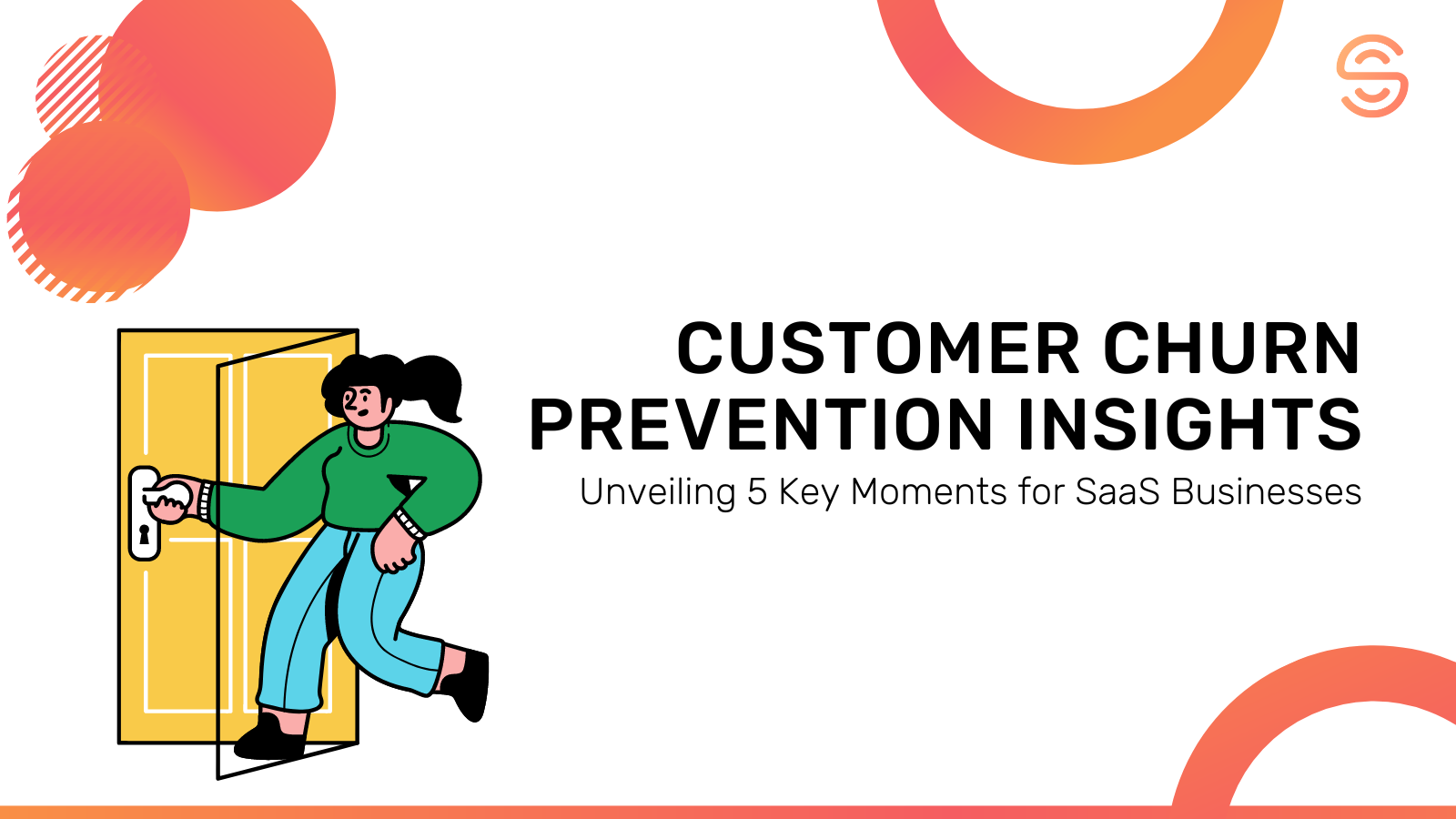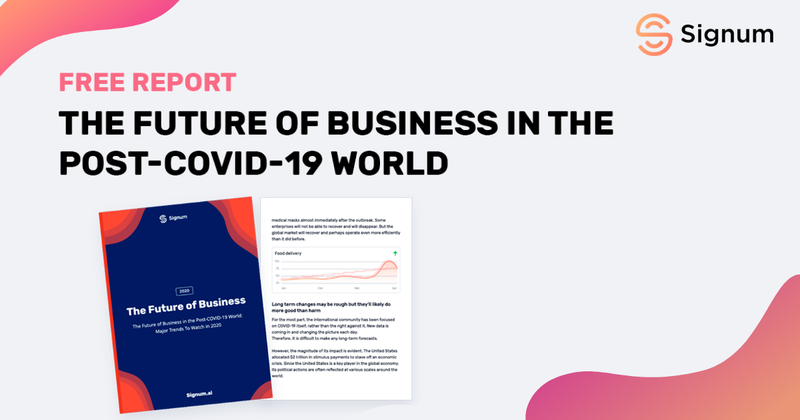- Point #1: Leveraging Analytics in Identifying Churn Risk
- Point #2: User Experience Monitoring for Customer Churn Prevention
- Point #3: Comprehensive Market Analysis and Good Churn Rate for SaaS
- Point #4: Personalization & Prospect Tracking for Customer Churn Prevention
- Point #5: Continuous Product Updates for Customer Retention
Customer Churn Prevention Insights: Unveiling 5 Key Moments for SaaS Businesses
June 23, 2023 5 min. read

Contents:
Try AI-Driven Insights
Monitoring for Free
Discover new business ideas and growth opportunities using
our AI-powered insights monitoring tool
In SaaS businesses, it is vital to comprehend and effectively handle churn rates to ensure long-term growth. Although the ideal churn rate may differ based on the industry, certain critical moments can be significant indicators of potential customer churn.
In this article, we will delve into five pivotal moments that demand attention when tracking customer churn signals in SaaS companies. By identifying the typical churn rate for SaaS businesses, you can gauge your performance against industry benchmarks.
Point #1: Leveraging Analytics in Identifying Churn Risk
To conduct practical customer churn risk analysis, it is crucial to leverage the potential of analytics and acquire invaluable insights into customer behavior. Take into account the following factors:
• Churn Rate: Analyze customer departures within a specific time frame to understand retention success and peak attrition periods.
• Customer Lifetime Value (CLV): Evaluate customers’ overall value throughout their lifecycle to identify high-value customers and assess long-term loyalty.
• Low License Utilization: Monitor customer usage of purchased licenses to uncover dissatisfaction or lack of perceived value, increasing churn risk.
• Low Net Promoter Score (NPS): A low NPS indicates unhappy customers who may churn if their concerns are not addressed promptly, requiring timely intervention.
• Increase in Support Tickets: Surging support tickets signal dissatisfaction or challenges with the product or service, indicating that SaaS customers are about to churn.
• Lack of Meeting Responsiveness: Ignoring or delaying customer meetings or communication can lead to frustration and churn. Prompt and responsive communication is crucial for customer satisfaction.
Leverage analytics and data to identify churn trends and influencing factors, enabling informed decision-making and successful customer retention strategies.
Point #2: User Experience Monitoring for Customer Churn Prevention
Customer satisfaction and platform usage experience are critical factors in churn risk prediction. Monitoring user experience lets you understand how customers interact with your SaaS product and identify potential pain points that could lead to churn. Here are the top considerations for UX monitoring:
• Feedback collection: Asking about product usage impressions, pain points, and missing functionalities helps improve opportunities and prevent customer churn.
• Review and comment analysis: Analyze customer feedback on your platform, social media, and review platforms. Look for recurring themes, issues, or grievances indicating potential churn triggers.
• Monitoring vital UX metrics: Track key metrics reflecting customer satisfaction and engagement levels, such as platform dwell time, user conversion rates, and adoption of specific features.
• Ongoing customer dialogue: Regularly communicate through reviews, meetings, or webinars to collect feedback. This helps identify customer needs, provide tailored solutions, and share insights about new features or updates. Strong customer support and attention enhance satisfaction and reduce churn likelihood.
Monitoring user experience empowers the proactive identification of pain points, prioritization of customer needs, and implementation of improvements aligned with their expectations. This fosters customer retention, minimizes churn, and continuously enhances your SaaS product.
Point #3: Comprehensive Market Analysis and Good Churn Rate for SaaS
To effectively retain customers, it’s crucial to understand the competitive landscape and market dynamics. Follow these key steps:
• Competitor Research: Analyze competitors’ products, services, pricing strategies, customer retention tactics, and marketing approaches. Identify your competitive advantages and areas for improvement.
• Market Monitoring: Stay updated on industry news, attend conferences, and engage with thought leaders. Adapt swiftly to emerging trends, technologies, and shifting customer demands.
• Customer Needs Assessment: Conduct market research and surveys to understand customer expectations, pain points, and areas for improvement. Use this knowledge for customer churn prevention and identifying growth opportunities.
Competitor and market analysis reduces churn, enhances competitiveness, and fosters long-term customer loyalty. Adapt best practices and offer unique features or services to attract and retain customers.
Point #4: Personalization & Prospect Tracking for Customer Churn Prevention
To optimize customer experience and retention, focus on personalization and prospect tracking with these strategies:
• Segmentation & Customization: Divide customers into segments based on needs, characteristics, and behavior. Customize platform and communication to cater to individual preferences. Use prospect tracking to gain insights and tailor your approach accordingly.
• Personalized Content: Offer valuable and relevant content personalized to the interests and preferences of current customers. Use prospect tracking insights to understand engagement patterns and deliver targeted content.
• Proactive Support: Provide exceptional customer service by promptly addressing feedback and inquiries. Utilize prospect tracking by Signum.AI to monitor the activities and behaviors of your current customers, allowing you to engage with them and address their needs proactively.
Point #5: Continuous Product Updates for Customer Retention
To mitigate the risk of churn, continuously evolving and enhancing your product is crucial. Regular updates and innovative functionalities can aid in customer retention and acquisition. Here are several pivotal aspects of consistent product updates and advancements:
• Prioritization and Roadmapping: Create a comprehensive roadmap based on customer feedback, market dynamics, and competitive landscape.
• Agile Development: Embrace flexibility and iteration to respond to changes and seize new opportunities quickly.
• Testing and Quality Assurance: Conduct rigorous testing to ensure seamless functionality and meet customer expectations.
• Training and Documentation: Provide comprehensive resources to empower customers in maximizing product utilization.
Consistent updates prevent customer churn, enhance user experience, and foster a competitive edge. Develop features, prioritize customer needs, and strive for continuous improvement.
While the average churn rate for SaaS companies varies, maintaining a low churn rate is generally desirable. Utilizing churn prevention software to proactively monitor these indicators and implementing effective retention strategies, SaaS businesses can work towards achieving an optimal churn rate and fostering long-term customer loyalty.
